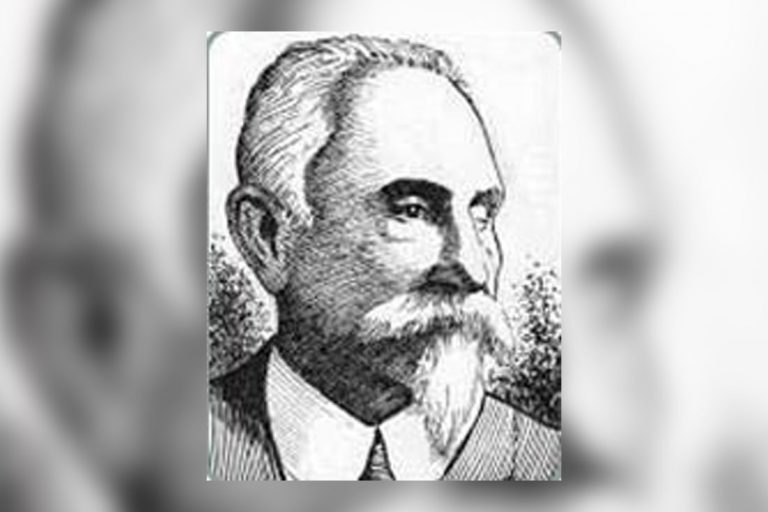With an excellent military career, Carlos Agüero García proved to live up to his time, remaining faithful to the independence aspirations and legitimate rights of Cuba until his last days.
The famous patriot was born on June 14th, 1843 in Camagüey. After finishing his primary education he dedicated himself to the administration of a small farm in the Maraguán area. From there he began to conspire against Spain, along with Gregorio Benítez, another of the pro-independence generals and some neighbors sympathetic to the cause.
Once the revolutionary process started, he joined under the orders of Augusto Arango, occupying the town of Guáimaro. He was present at the Paradero de Las Minas meeting, where the figure of Ignacio Agramonte takes center stage, and the continuation of the fight in Camagüey is decided. As the Elda Cento National History Prize said, this meeting had a significance that exceeded its immediate objectives.
He also participates in the Bonilla combat, which according to Jorge Juárez Cano was “the baptism of fire for Camagüey forces”, as the Mambisa forces defeated a large Spanish column led by the Count of Valmaseda despite the absence of military personnel among Camagüey forces was notorious in that first moment of the fight.
Military rise
After the death of Augusto Arango in January 1869, he came under the command of General Manuel de Quesada. As a soldier he stands out in the combat of the Paso de Lesca, in the vicinity of Sierra de Cubitas and in which he obtains the rank of corporal. From that year until 1873 he was part of the ranks of Ignacio Agramonte. Due to his performance, he is promoted to first lieutenant and later, during the confrontations between El Salado and Jacinto, to captain.
As a member of Agramonte’s infantry, he participated on May 11th, 1873, in the Potrero de Jimaguayú combat, an action in which El Mayor died. After the death of Ignacio, General Gómez occupies the leadership; Agüero remains in the army and participates in the assaults on the towns of Nuevitas, Santa Cruz del Sur, in the combats of La Sacra, Palo Seco (one of the most significant victories of the Liberation Army), Naranjo and Mojacasabe, and in the important battle of Las Guásimas.
When Gómez went to Las Villas in January 1875, he was under the direction of Henry Reeve, the Englishman, who promoted him to commander. In 1877 he received the ranks of lieutenant colonel and command of the “Caonao” infantry regiment, position he was carrying out at the time he was taken prisoner during a skirmish. However, after the Zanjón Agreement he is released.
When the Chiquita War broke out, while preparing for the armed uprising, he was imprisoned again for a period of nine months. In the new feat, the Necessary War, he is one of the first people from Camagüey to join the fight. On May 15th, 1895, he joined the battlefield with the same impulse and unshakable attitude as in 1968. He formed a small force with which he maneuvered until the following month when General Gómez’s contingent entered the province and began to fight under his command.
On June 29th, 1896, Carlos Agüero García received the rank of Brigadier General and successively became the head of the 1st and 2nd Division of the Third Corps of the Liberation Army. Later he commanded the Trocha Brigade and the Third Brigade of the 2nd Division of the 3rd Corps; but in the final structure of the Liberation Army this last unit does not appear registered. In the course of the two wars he received a total of six gunshot wounds, in addition to having lost his right eye.
Position assumed in the bourgeois Republic
Once the bourgeois Republic was established, he expressed his rejection of the North American presence on Cuban soil, publicly criticizing the various demagogic and servile republican governments, those who supported foreign interference and those who had double standards. Specifically since 1901, together with Maximiliano Ramos (also a general), he participated in all acts of repudiation against the Platt Amendment that his comrade in arms was organizing at that time.
It is important to note that during this stage he was a city council inspector and one of the leaders of the Veterans and Patriots Movement. In 1938, the President of the Republic of Cuba, Federico Laredo Bru, granted him an extraordinary lifetime pension of 2,400 pesos a year. Carlos Agüero García died in Camagüey, his hometown, on January 21st, 1939.
Camaguey loses one of its most brilliant and courageous men; a man who knew how to give more of himself in each combative action and understand that every effort, sacrifice and achievement was part of a greater goal, the independence of Cuba.
Bibliography
Cento, Elda coords. (2012). Cuadernos de historia principeña 11. Patrimonio y legado al siglo XXI. Camagüey: Ácana.
Figueredo, Fernando (1969). La Revolución de Yara. La Habana: Instituto Cubano del Libro. T.1 y T.2.
Miró Argenter, José Miró (1970). Crónicas de la guerra. La Habana: Instituto Cubano del Libro. T.1 y T.2.
Translated by: Aileen Álvarez García






